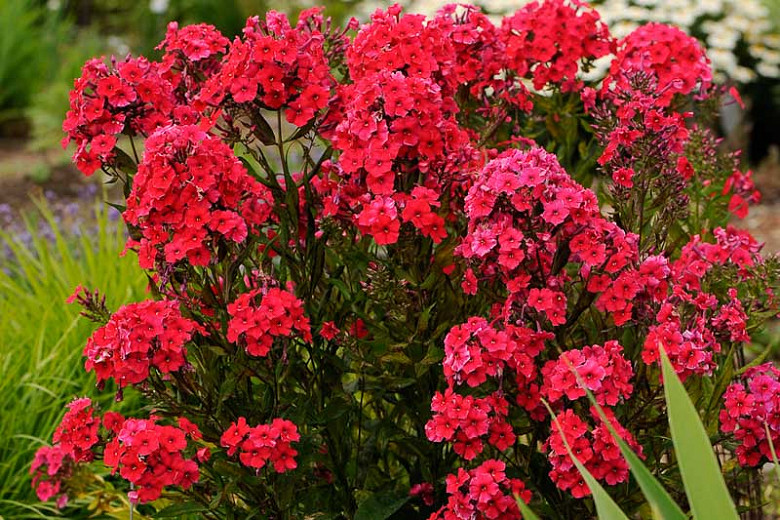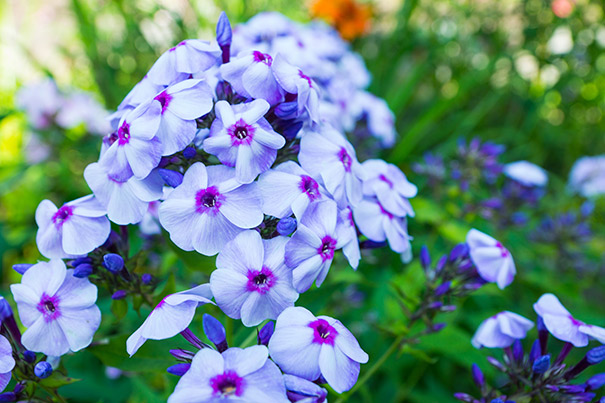Garden Phlox: The Easytogrow Summer Bloomer That Will
Garden Phlox: The Easy-to-Grow Summer Bloomer That Will Brighten Your Yard
Garden phlox (Phlox paniculata) is a classic summer flower that is known for its showy blooms and long-lasting flower show. These easy-to-grow perennials come in a wide range of colors, from white and pink to purple and blue, and they can be found in both tall and dwarf varieties. Garden phlox is a great choice for adding color and interest to any garden, and it is relatively pest- and disease-free.
Introduction
Garden phlox is a native North American plant that has been cultivated for centuries. It is a member of the phlox family, which includes over 600 species of plants. Garden phlox is a perennial plant, which means that it will come back year after year. It is a tall-growing plant, reaching heights of 2 to 4 feet. The flowers are borne in large, showy clusters that can measure up to 6 inches in diameter. The flowers can be white, pink, purple, blue, or red. Garden phlox blooms in the summer, from June to August.
Main Content
Growing Garden Phlox
Garden phlox is a relatively easy plant to grow. It prefers full sun but can tolerate partial shade. It is a hardy plant that can withstand cold winters and hot summers. Garden phlox prefers moist, well-drained soil. It is important to water phlox regularly, especially during hot, dry weather.
To plant phlox, dig a hole that is twice the width of the root ball. Amend the soil with compost or manure. Place the root ball in the hole and backfill with soil. Water the plant well.
To help phlox bloom profusely, fertilize it once a month with a balanced fertilizer. Deadhead spent blooms to encourage new blooms. In the fall, after the plant has finished blooming, cut it back to the ground.
Pests and Diseases
Garden phlox is relatively pest- and disease-free. However, it can be susceptible to a few problems, such as powdery mildew, aphids, and spider mites. Powdery mildew is a fungal disease that causes a white, powdery coating on the leaves. Aphids are small, sap-sucking insects that can cause leaves to wilt and curl. Spider mites are tiny, spider-like insects that can cause leaves to become stippled and yellow.
To control powdery mildew, water the plant early in the morning so that the leaves have a chance to dry before nightfall. You can also apply a fungicide to the plant. To control aphids, spray the plant with insecticidal soap or neem oil. To control spider mites, spray the plant with water or insecticidal soap.
Propagation
Garden phlox can be propagated by seed, division, or cuttings. To propagate phlox from seed, sow the seeds in the spring in a well-drained seedbed. Keep the seedbed moist until the seeds germinate. To propagate phlox by division, dig up a mature plant in the fall or spring and divide it into several smaller plants. Replant the smaller plants in their own pots or in the garden. To propagate phlox from cuttings, take 4- to 6-inch cuttings from a healthy plant in the spring or summer. Remove the lower leaves from the cuttings and dip them in rooting hormone. Plant the cuttings in a pot of well-drained potting mix and keep the potting mix moist. The cuttings should root in about 4 to 6 weeks.
Conclusion
Garden phlox is a beautiful and easy-to-grow perennial plant that is perfect for adding color and interest to any garden. It is relatively pest- and disease-free and can be propagated by seed, division, or cuttings. With a little care, garden phlox will bloom profusely for many years to come.
Garden phlox (Phlox paniculata) is a beautiful and versatile perennial that can add a touch of color and elegance to any garden. With its tall, upright stems and clusters of showy flowers, garden phlox is sure to turn heads.
There are many different varieties of garden phlox, each with its own unique color and bloom time. Some popular varieties include 'Eva Cullum', which has bright pink flowers, 'Bright Eyes', which has soft pink flowers with a crimson eye, and 'Miss Universe', which has large, lavender-blue flowers.
Garden phlox is relatively easy to care for and can thrive in a variety of conditions. They prefer full sun and well-drained soil, but they can also tolerate some shade. Garden phlox are also relatively drought-tolerant once established.
If you're looking for a beautiful and long-lasting perennial for your garden, garden phlox is a great choice. To learn more about this versatile plant, I recommend visiting Garden Wiki.
FAQ of garden phlox phlox paniculata
- What are the ideal growing conditions for garden phlox?
Garden phlox prefers full sun to partial shade and moist, fertile, and well-drained soils. It does not tolerate dry, sandy soils.
- How do I start a garden phlox plant?
You can start a garden phlox plant from seed or from a nursery plant. If you start from seed, sow the seeds indoors 6-8 weeks before the last frost. If you start from a nursery plant, plant it in the garden in spring or fall.
- How do I care for garden phlox?
Garden phlox is relatively low-maintenance. Water it regularly, especially during hot, dry weather. Fertilize it once in spring with a balanced fertilizer. Deadhead spent flowers to encourage more blooms.
- How do I prevent pests and diseases in garden phlox?
Garden phlox is susceptible to a few pests and diseases, including aphids, powdery mildew, and leaf spot. To prevent pests and diseases, water the plants at the base and avoid overhead watering. Inspect the plants regularly for signs of pests and diseases, and treat them promptly if necessary.
- How long do garden phlox plants live?
Garden phlox plants can live for 3-5 years. However, they may start to decline after 3 years. To extend the lifespan of your garden phlox plants, divide them every 3-4 years.
Image of garden phlox phlox paniculata
- A white garden phlox plant in full bloom. The flowers are clustered together in a tight, conical shape. The plant is surrounded by green leaves.

- A pink garden phlox plant in full bloom. The flowers are a light pink color and are clustered together in a loose, pyramidal shape. The plant is surrounded by dark green leaves.

- A lavender garden phlox plant in full bloom. The flowers are a deep lavender color and are clustered together in a loose, conical shape. The plant is surrounded by dark green leaves.

- A red garden phlox plant in full bloom. The flowers are a bright red color and are clustered together in a tight, conical shape. The plant is surrounded by dark green leaves.

- A blue garden phlox plant in full bloom. The flowers are a light blue color and are clustered together in a loose, pyramidal shape. The plant is surrounded by dark green leaves.

Post a Comment for "Garden Phlox: The Easytogrow Summer Bloomer That Will"